Emilia Romagna: tradizioni culinarieEmilia Romagna: culinary traditions
L’Emilia Romagna è composta da due regioni confinanti che hanno avuto storie diverse fra loro. Nel 1860 l’Emilia comprendente le città di Modena, Reggio, Parma e Piacenza fu annessa al Regno d’Italia. I confini amministrativi della regione vennero ampliati tanto da comprendere le città di Bologna, Ferrara e l’intera Romagna. Le due zone hanno avuto destini e culture assai diverse, tanto da caratterizzarne anche l’arte della cucina.
EMILIA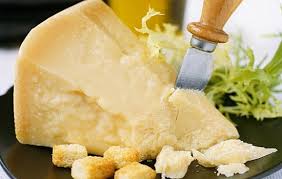
La gastronomia emiliana è opulenta, solida, saporita e condita, ed è verosimilmente dalla tradizione cinque-seicentesca che ha ereditato questi caratteri, per i quali tutt’oggi Bologna viene chiamata “la grassa”. Nella complessa storia della regione la vita delle corti ha certo avuto molta influenza, e lo dimostra la ricchezza delle ricette proposte a partire da M° Martino per proseguire con Messisbugo e Vincenzo Tanara.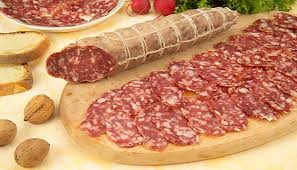
Fra gli autori dell’arte della cucina ricordiamo anche l’Artusi che nel suo “La scienza in cucina…” afferma: «Quando incontrate la cucina emiliana, fate una riverenza, perché se la merita». Amabili e gaudenti gli emiliani sono da sempre cultori della cucina, mangiano bene e discutono di cibo con formidabile passione.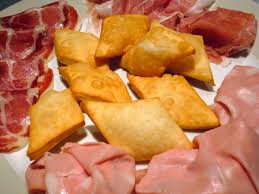
Tre i protagonisti di questa gastronomia: formaggio Parmigiano Reggiano, paste all’uovo ripiene e non, lavorazione dei salumi e gnocco fritto.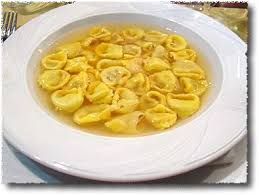
ROMAGNA
I romagnoli sono da sempre cultori della cucina, anche se negli antichi ricettari il cibo di quest’area quasi non compare, tranne eccezioni come i cappelletti, probabilmente perché mancarono i cuochi delle grandi famiglie nobili qui sostituite dal potere della Chiesa.  Un’emblema della Romagna, quasi un simbolo conosciuto ormai ovunque è la piadina, che in questa terra non è solo un cibo, con gli oltre mille chioschi sparsi lungo la costa, ma è un vero e proprio fenomeno di costume. La realtà geografica e la storia hanno determinato una gastronomia che qui si può suddividere in tre settori: quello marino, quello delle campagne e quello delle carni.
Un’emblema della Romagna, quasi un simbolo conosciuto ormai ovunque è la piadina, che in questa terra non è solo un cibo, con gli oltre mille chioschi sparsi lungo la costa, ma è un vero e proprio fenomeno di costume. La realtà geografica e la storia hanno determinato una gastronomia che qui si può suddividere in tre settori: quello marino, quello delle campagne e quello delle carni.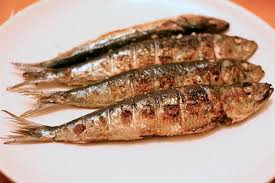 La cucina di mare è legata alla pescosità dell’Adriatico, ricco soprattutto di pesce azzurro (cucinato alla brace o fritto), e nei tratti di costa rocciosa, cozze, vongole e altri molluschi. Ortaggi e frutta si distinguono nelle preparazioni dei condimenti spesso a base di scalogno, zucchini, cipolle, melanzane, pomodori e peperoni (con cui si realizza il caratteristico purè).
La cucina di mare è legata alla pescosità dell’Adriatico, ricco soprattutto di pesce azzurro (cucinato alla brace o fritto), e nei tratti di costa rocciosa, cozze, vongole e altri molluschi. Ortaggi e frutta si distinguono nelle preparazioni dei condimenti spesso a base di scalogno, zucchini, cipolle, melanzane, pomodori e peperoni (con cui si realizza il caratteristico purè).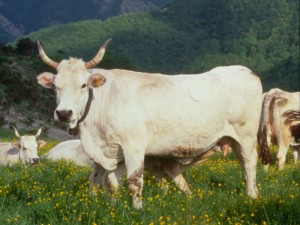 L’opulenza delle carni ha origine nell’ambito della cucina risalente al dominio bizantino e delle Signorie, ricordiamo soprattutto quelle: di maiale, di bovino (razza romagnola), e da cortile cucinate in forno con abbondante uso di limone e di rosmarino.Emilia Romagna is composed of two neighboring regions that have had different histories. In 1860 Emilia
L’opulenza delle carni ha origine nell’ambito della cucina risalente al dominio bizantino e delle Signorie, ricordiamo soprattutto quelle: di maiale, di bovino (razza romagnola), e da cortile cucinate in forno con abbondante uso di limone e di rosmarino.Emilia Romagna is composed of two neighboring regions that have had different histories. In 1860 Emilia
encompassing the cities of Modena, Reggio, Parma and Piacenza was annexed to the Kingdom of Italy. The administrative boundaries of the region were expanded so much to include the city of Bologna, Ferrara and the whole Romagna. The two areas have very different cultures and destinations, as well as to characterize the art of cooking.
The cuisine of Emilia is grand, solid, flavorful and seasoned, and is likely from the ‘500/’600 tradition that inherited these characters, for which still today Bologna is called the “fat”. In the complex history of the region, the life of the courts has certainly had a lot of influence, and it shows the wealth of recipes from Maestro Martino to continue Messisbugo and Vincenzo Tanara.
Among the authors of the art kitchen Artusi also remember that in his “Science in the Kitchen …” says:
“When you meet the Emilian cuisine, take a bow, because if it deserves it.” Lovely and bons vivants Emilians have always been lovers of food, eat good food and discussing about food with tremendous passion.
Three stars of this cuisine: Parmesan cheese, egg pasta stuffed and not stuffed, cured meats as salami, ham, culatello and fried dumplings.
Romagna
The romagnoli have always been lovers of food, although the food in the ancient recipe of this area almost is not there, except in exceptional circumstances such as Cappelletti, probably because it lacked the chefs of the great noble families here replaced by the power of the Church. A symbol of Romagna is a symbol known everywhere: the piadina, which in this country is not just a food, with over a thousand kiosks scattered along the coast, but it is a real phenomenon. The geographic reality and history have created a cuisine that here can be divided into three areas: the sea, the countryside and the meats.
A symbol of Romagna is a symbol known everywhere: the piadina, which in this country is not just a food, with over a thousand kiosks scattered along the coast, but it is a real phenomenon. The geographic reality and history have created a cuisine that here can be divided into three areas: the sea, the countryside and the meats. The sea food is related to the abundance of fish in the Adriatic, especially rich in oily fish (cooked grilled or fried), and the stretches of rocky coast, mussels, clams and other shellfish. Vegetables and fruit stand in prepared dressings often made from shallots, zucchini, onions, eggplant, tomatoes and peppers (with whom is realized the characteristic puree).
The sea food is related to the abundance of fish in the Adriatic, especially rich in oily fish (cooked grilled or fried), and the stretches of rocky coast, mussels, clams and other shellfish. Vegetables and fruit stand in prepared dressings often made from shallots, zucchini, onions, eggplant, tomatoes and peppers (with whom is realized the characteristic puree). The opulence of the meat has its origins in the kitchen dates back to the Byzantine Empire and to the Signorie, we remember especially: pork, beef (race Romagna), and poultry cooked in the oven with abundant use of lemon and rosemary.
The opulence of the meat has its origins in the kitchen dates back to the Byzantine Empire and to the Signorie, we remember especially: pork, beef (race Romagna), and poultry cooked in the oven with abundant use of lemon and rosemary.





Leave a comment